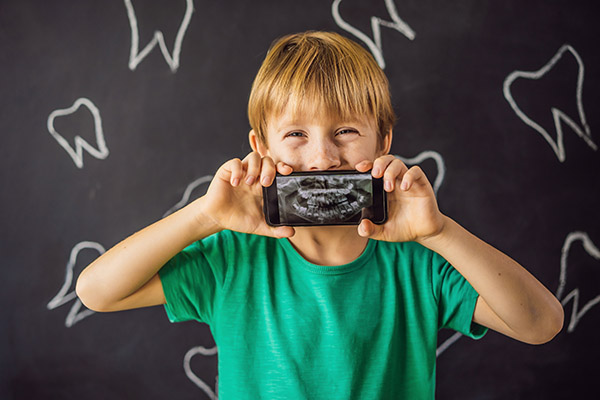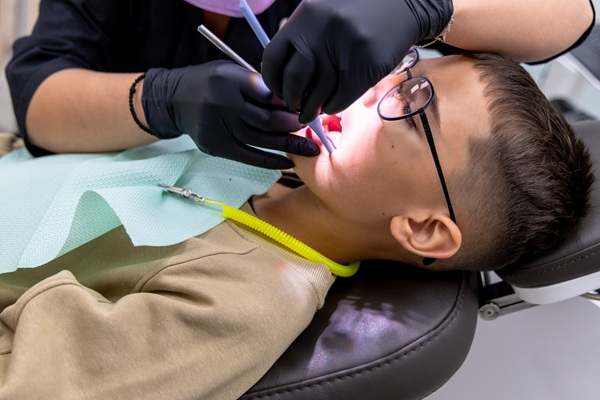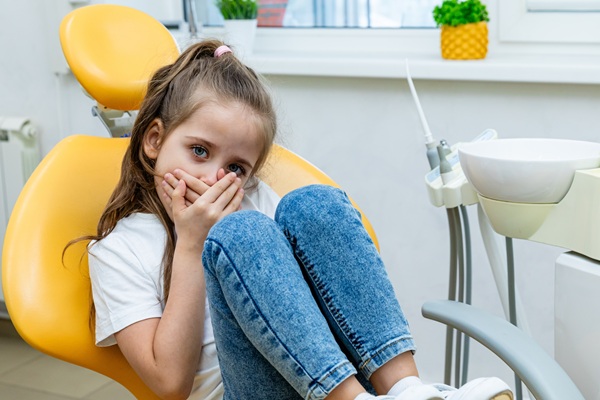 Dental X-rays are essential parts of a pediatric dental visit. As a diagnostic instrument, an X-ray is used by pediatric dentists to uncover and highlight problem areas in order to investigate them further and develop an effective treatment plan. Continue reading to know when the dentist might recommend digital X-rays during a dental appointment.
Dental X-rays are essential parts of a pediatric dental visit. As a diagnostic instrument, an X-ray is used by pediatric dentists to uncover and highlight problem areas in order to investigate them further and develop an effective treatment plan. Continue reading to know when the dentist might recommend digital X-rays during a dental appointment.
Reasons for digital X-rays
Pediatric dentists utilize digital X-rays for various reasons. Implementing the latest dental technology enables dentists to provide their patients with the best dental experience and the most up-to-date pediatric dental procedures.
Nowadays, digital x-rays are used instead of older film X-rays. The photographs are preserved electronically so the dentist can review images with the parent through a computer screen. Dentists will most likely use different digital X-rays to gain a complete picture of a child's dental health. X-rays come in various forms:
- Bitewings are used to discover decay between the rear teeth
- Periapical can reveal the tooth roots
- Panoramic X-rays show the entire jaw area and every part of the teeth
- Cone Beam CTs are rarely used but can create three-dimensional (3D) images
Dentists use X-rays to analyze the teeth that are inaccessible or not visible to the human eye, such as the spaces between and inside each tooth. X-rays also enable the dentist to view the state of the structures below the gum line.
For a complete tooth image
Dental X-rays enable dentists to view all the different components of the teeth, from the crown to the root. This diagnostic imaging instrument creates images of the mouth, teeth, gums, and bone using unique electromagnetic radiation energy.
Digital X-rays are also used at the dental office to take photographs of a child's teeth. X-rays are generally safe, but digital X-rays reduce radiation exposure even more. The dentist can also see the photographs on the computer screen immediately and magnify them for parents’ perusal. It is also possible to compare the most recent X-ray with any previous X-rays to track changes.
For identifying the minor problem before they become serious
One of the main reasons that dentists use digital X-rays is to detect dental problems that are not evident to the naked eye. The early detection of dental problems may help prevent future oral health problems. Dental X-rays are used to detect cavities and determine the extent of deterioration. Cysts, abscesses, and odd growths are also discovered using X-rays. In addition, the scans enable dentists to see adult teeth that have not yet erupted through the child's gums to ensure that they are developing correctly and impaction will not occur.
For keeping an eye on the child’s progress
Dental X-rays are required for children in order for the dentist to track the development of their adult teeth and the growth and development of the jaw. The pediatric dentist also utilizes dental X-rays to check the condition of the alveolar bone, which surrounds the tooth's root.
In conclusion
The frequency of digital X-rays during pediatric dental visits is determined by the child’s overall oral health, illness risk, and age. More regular dental X-rays may be required due to the many changes that occur in a child's mouth and their higher risk of cavities.
Request an appointment or call Nett Pediatric Dentistry & Orthodontics at 623-759-7658 for an appointment in our Phoenix office.
Recent Posts
Regular visits to a pediatric dentist who specializes in young patients are an important part of establishing good oral health practices. Many instances of severe dental conditions in children stem from either a lack of regard for proper hygiene or a lack of knowledge on the proper ways to care for a child's teeth. Check…
Pediatric dental care supports children's health, comfort, and development. Not only does it strive to detect and treat oral health problems early, but it also desensitizes children to dental visits to make each experience more comfortable. This special care and attention can motivate children to take good care of their teeth from a young age.Dental…
Cavity treatment for kids is a chief concern among parents, and for a good reason. Cavities are common in children of all ages. According to the Centers for Disease Control and Prevention, over half of the kids ages 6 to 8 have had at least one cavity in a primary tooth. The good news is…


